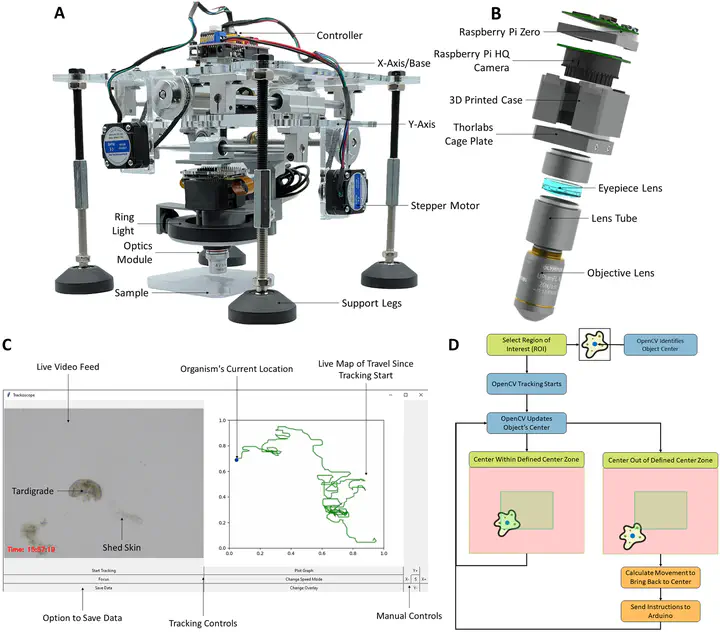Trackoscope

World Wide Series Seminar
Cells and microorganisms are motile, yet the stationary nature of conventional microscopes impedes comprehensive, long-term behavioral and biomechanical analysis. The limitations are twofold: a narrow focus permits high-resolution imaging but sacrifices the broader context of organism behavior, while a wider focus compromises microscopic detail. This trade-off is especially problematic when investigating rapidly motile ciliates, which often have to be confined to small volumes between coverslips affecting their natural behavior. To address this challenge, we introduce Trackoscope, an 2-axis autonomous tracking microscope designed to follow swimming organisms ranging from 10μm to 2mm across a 325 square centimeter area for extended durations—ranging from hours to days—at high resolution. Utilizing Trackoscope, we captured a diverse array of behaviors, from the air-water swimming locomotion of Amoeba to bacterial hunting dynamics in Actinosphaerium, walking gait in Tardigrada, and binary fission in motile Blepharisma. Trackoscope is a cost-effective solution well-suited for diverse settings, from high school labs to resource-constrained research environments. Its capability to capture diverse behaviors in larger, more realistic ecosystems extends our understanding of the physics of living systems. The low-cost, open architecture democratizes scientific discovery, offering a dynamic window into the lives of previously inaccessible small aquatic organisms.
Project Author(s)
Priya Soneji, Elio J. Challita, Saad Bhamla
Project Links
https://journals.plos.org/plosone/article?id=10.1371/journal.pone.0306700